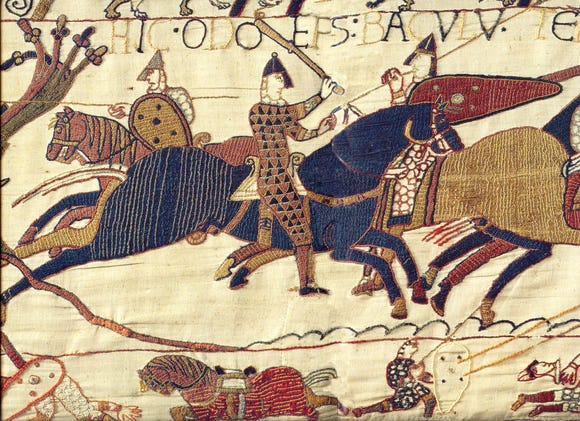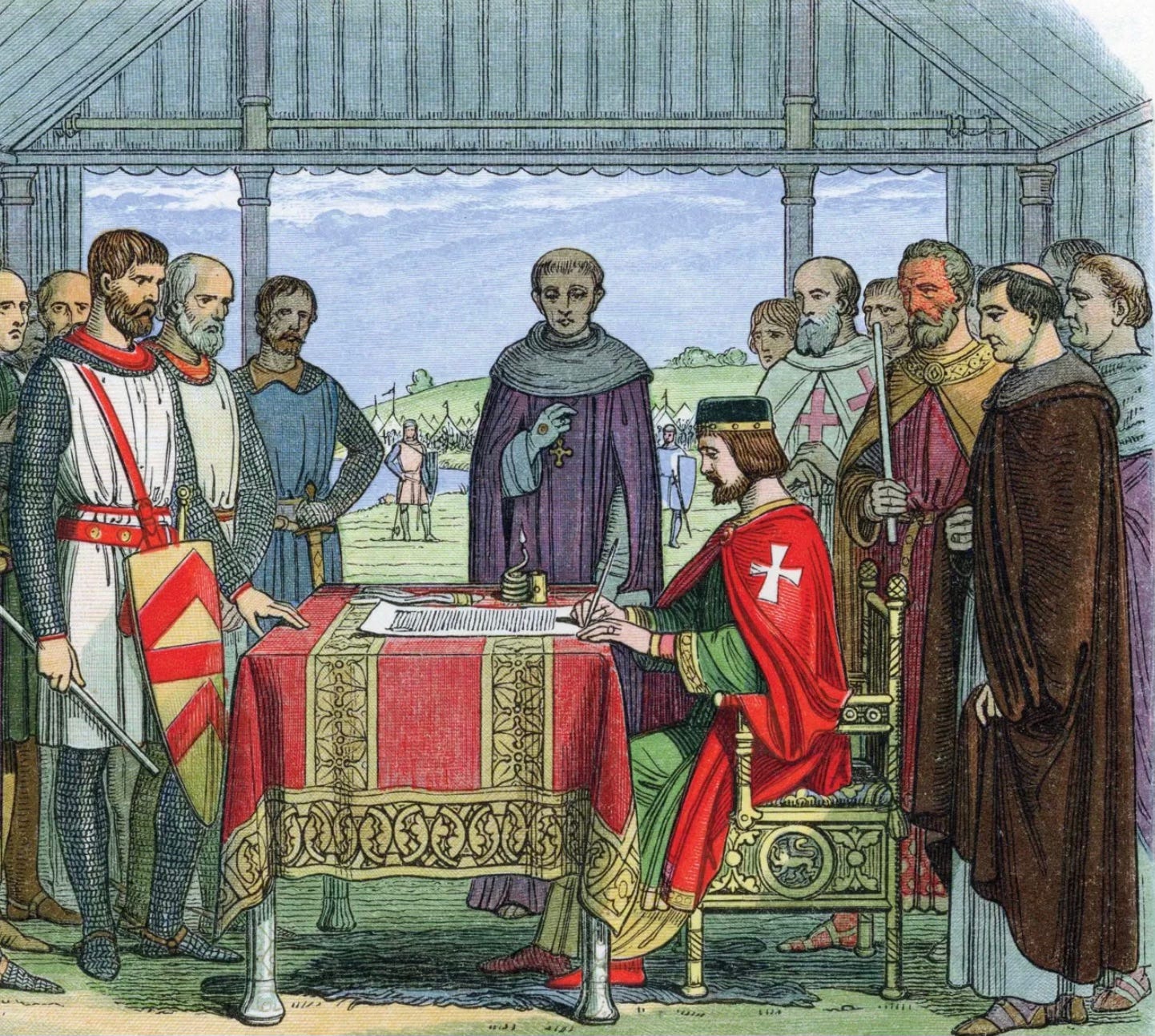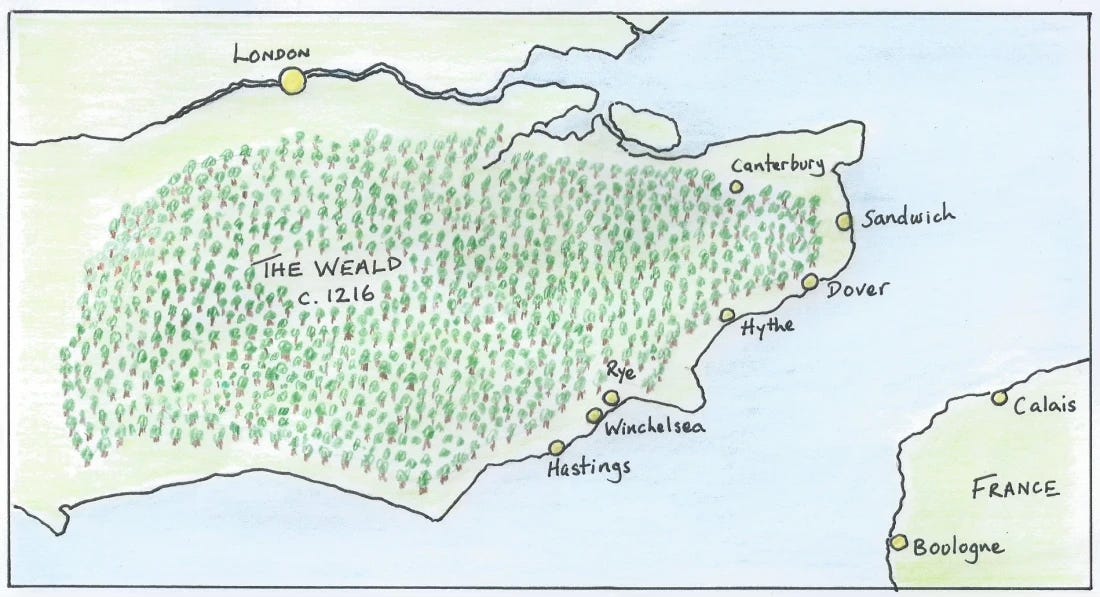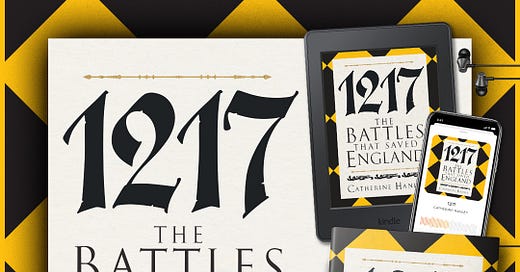Book Review: 1217 - The Battles That Saved England
The Bayeux Tapestry, The Magna Carta, A Mercenary Pirate-Monk, and The Origins of Robin Hood

One of the first things one learns about English history is that in 1066 William the Conquerer began the Norman (French) transformation of England following the Battle of Hastings. A new, Norman ruling class instituted common law, with Latin as the official language of church and government.
The transition from Anglo-Saxon to Norman England was neither simple nor clean. As Catherine Hanley writes,
The Norman Conquest of 1066 is one of the best known events in English history, but a second invasion from across the Channel took place exactly 150 years later, during the course of which a French prince was welcomed and proclaimed king by a cheering throng in the streets of London.
Have you heard of King Louis I of England? If not, you are not alone. The war that followed Louis’s arrival was almost entirely overlooked (by history) . . . [t]he story of the invasion, and the war that took place on English soil for seventeen months from May 1216 to September 1217 is one of military triumph and disaster . . . that decided the future of England.

Magna Carta
The Magna Carta is famous because it planted the seeds of individual freedom, parliamentary democracy, and the supremacy of law over arbitrary rule. What is less well known is that immediately after saving his neck by signing, King John repudiated The Great Charter.
Further, Pope Innocent III annulled the Charter as the product of coercion, saying that “under threat of excommunication we order the king should not dare to observe it.“ It was thus, under the banner of a Papal Decree, that King John went to war with the knights with whom he had negotiated at Runnymede.
The rebellious landowners (“barons”) who faced John’s armies and sought enforcement of these new, hard-won rights asked for and received the intervention of French Prince Louis I, who crossed the channel and laid siege to Dover Castle.
Louis marched from Dover to the Thames, his armies engaging in a brutal, “ravaging” strategy against the English population in the densely wooded corridor from the Thames to the Channel. At the height of his success, Louis occupied the City of Winchester (London) and conquered half of England.

Writer and historian Catherine Hanley is an expert in this time and skillfully guides the reader through complex issues of military warfare, hereditary succession, and the strict gender and class roles of 13th Century England.
The reader follows characters such as stalwart advisor to four English monarchs William Marshal, mercenary-pirate Eustace The Monk, and a certain William of Cassingham whose guerrilla tactics against ravaging French forces aided an unlikely English victory by denying Louis a reliable military supply chain.
Indeed, William is a possible candidate for the “Robin Hood” origin story as he returned looted property to its rightful English owners, engendering goodwill and creating a nascent “national” identity and the seeds of the contemporary nation-state.
1217-The Battles That Saved England is a page-turning, accessible, scholarly account of this fascinating and too often ignored period of history.
1217 - THE BATTLES THAT SAVED ENGLAND | By Catherine Hanley | Osprey | 305 pp. | $35




